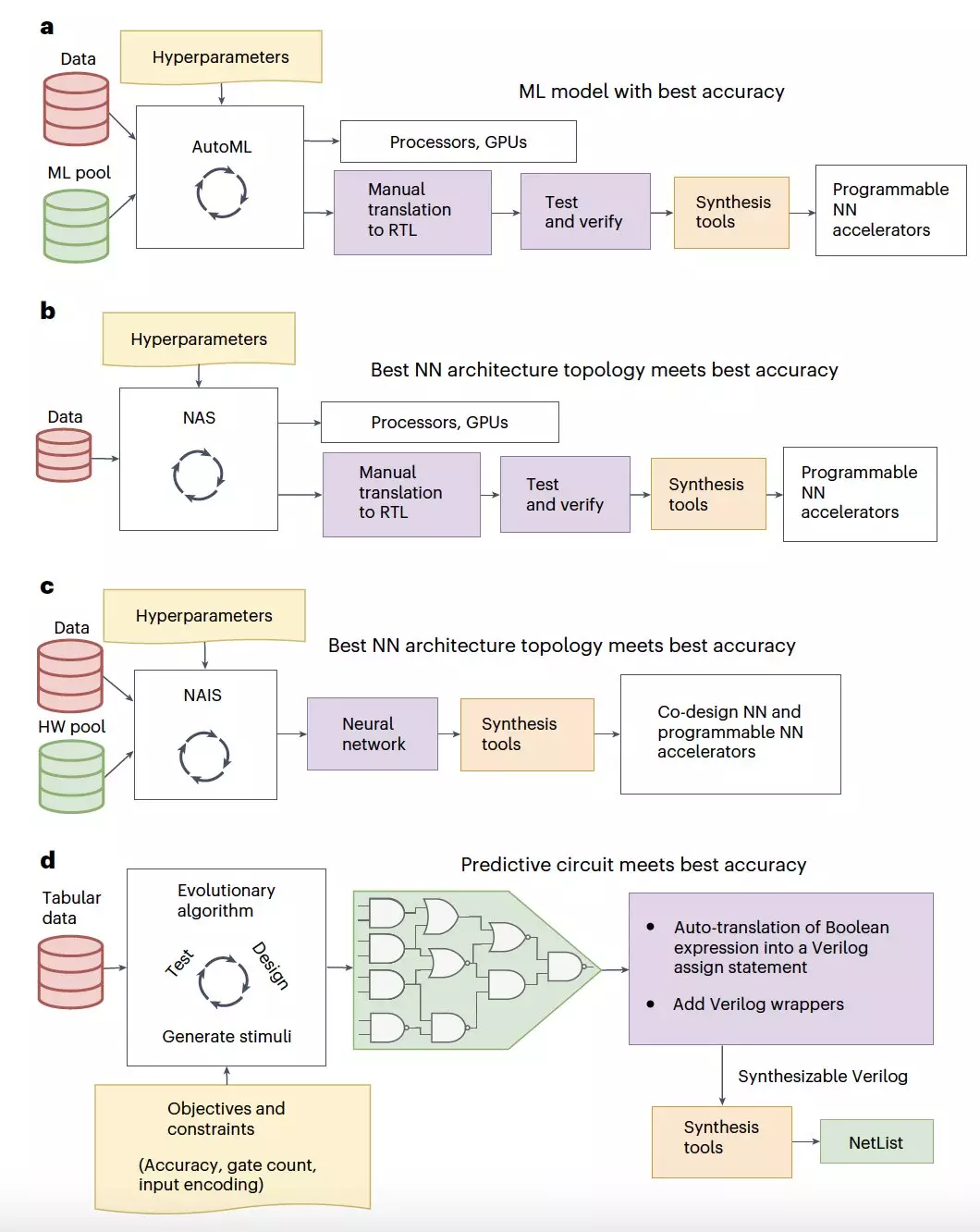In recent years, deep learning techniques have made significant strides in achieving human-level accuracy across various tasks such as image classification and natural language processing. The adoption of these computational methods has sparked a surge in research efforts to develop hardware accelerators capable of meeting the substantial computational requirements of deep neural networks.
To address the computational demands of deep learning models, researchers have been exploring the design of hardware accelerators – specialized computing devices optimized for specific computational tasks. Unlike conventional central processing units (CPUs), these accelerators are programmed to efficiently execute deep neural networks, offering improved performance and energy efficiency.
A team of researchers from the University of Manchester and Pragmatic Semiconductor recently introduced a groundbreaking approach to automatically generate classification circuits from tabular data. This innovative method, outlined in a paper published in Nature Electronics, leverages a novel methodology known as “tiny classifiers” to streamline the development of predictive models for unstructured data.
The tiny classifier circuits devised by the research team consist of a minimal number of logic gates, yet they deliver impressive accuracy comparable to state-of-the-art machine learning classifiers. By employing an evolutionary algorithm to optimize the configuration of logic gates, the researchers were able to create efficient classifier circuits with a maximum of 300 logic gates.
Through extensive simulations and real-world testing on a low-cost integrated circuit (IC), the researchers demonstrated the superior performance and efficiency of their tiny classifiers. These circuits exhibited significantly lower area and power consumption compared to traditional machine learning baselines, showcasing their potential for implementation in resource-constrained environments.
Looking ahead, the tiny classifiers developed by the researchers hold promise for a diverse array of applications. From serving as triggering circuits for smart packaging and monitoring systems to enabling low-cost near-sensor computing, these innovative circuits offer a versatile solution for addressing real-world challenges across various domains.
The advent of tiny classifiers represents a significant milestone in the field of machine learning, paving the way for more efficient and scalable solutions to complex data processing tasks. By leveraging the power of automated circuit generation and optimization, researchers are driving advancements in hardware-accelerated computing and unlocking new possibilities for deploying machine learning models in practical settings.


Leave a Reply